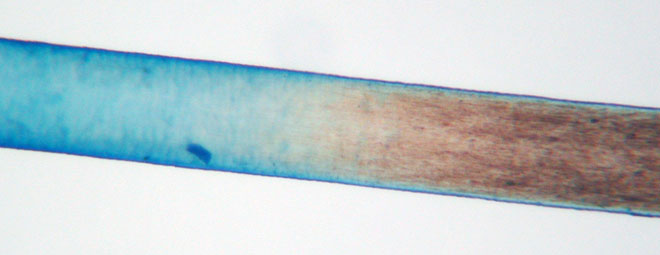Criminal Forensic
Microtrace scientists have been performing trace evidence examinations and providing scientific assistance to specialists in other forensic disciplines for over four decades. Our analytical services are utilized by prosecutors, defense attorneys, police, forensic laboratories and, occasionally, the news media. Our analytical expertise in the identification and comparison of single small particles and traces of microscopic evidence permit us to exploit remnants of almost anything that might be left at a crime scene or carried away from it, according to Locard’s Exchange Principle. Our approach is based upon an unparalleled combination of analytical tools, reference collections, active scientific research, and experience.
Reputation
We have been retained to provide scientific services in the forensic investigation of many high profile cases. Some well-known cases investigated for police and prosecutors have included the Narita Airport Bombing, the disappearance of candy heiress Helen Brach, the Jon Benet Ramsey Case, The Unabomber and the Green River Murders. Our discovery and scientific investigation of microscopic trace evidence in the Green River Murders, the biggest serial murder case in U.S. history, led directly to the confession and subsequent conviction of Gary Ridgway for the murders of 48 young women. Cases investigated for the defense include the Oklahoma City Bombing, the Danielle van Dam abduction and murder, and the war crimes trial in Israel of John Demjanjuk, who was accused of being Ivan the Terrible, a notorious concentration camp guard during the Second World War.
Investigative and Comparative Analysis
A great deal of our public reputation is based upon our track record in providing assistance in investigations that are beyond the capabilities of local, state, and federal crime laboratories. One of the keys to our successes has been the flexibility of our sample driven approach that permits us to examine evidence in a more creative scientific manner. Such requests range from the more routine (e.g., hair, fiber, glass and paint comparisons) to the more unusual inquiries, including:
- Complex investigations – We have been involved in some of the most complex and longest running investigations in US history.
- Investigative analysis – We specialize in developing investigative leads from trace evidence in cases when no reference known samples are available.
- Unknown Identifications – Expertise in the identification of completely unknown solids, liquids, residues and gases.
- Soil and Dust analysis – Our scientists have been practicing and developing the science of forensic soil analysis for over four decades and have pioneered the field of geographic sourcing.
- Hair analysis – Human hair comparisons, animal hair identification, and DNA screening are based on extensive physical reference collections and experience.
- Degraded evidence – We have obtained valid evidence from numerous cases rejected by other laboratories (due to sample size, degradation, type of evidence).
- Colorant analysis – We have one of the most advanced approaches for classifying and identifying colorants in the smallest particles.
- Nanoscale – Our analytical methods have been developed to locate and obtain useful information from particles overlooked in most laboratories.
Materials
We have experience working with virtually any substance including solids, liquids, residues, and volatile compounds. In addition to more traditional types of trace evidence such as hair, fibers, paint, gun shot residue, drugs, and glass, we also conduct analyses of virtually any other material including nanoparticles, wood, vomit, bodily fluids, polymers, cosmetics, and inks. Our laboratory specializes in the analysis of complex mixtures such as dusts, soils, white powders, and unknown materials. Our active research program and industrial microscopy clients helps us to stay abreast of the newest material developments and technical advances in analytical approaches.
Trial Support
Our analytical results are incorporated into narrative reports that explain our methods, report and document our results, and clearly state our conclusions. These reports are backed-up with expert testimony, and our senior staff have been qualified to testify in both U.S. and foreign courts. Our credentials include years of training, active research, teaching, and experience in the microscopy and microchemistry of a wide and ever increasing variety of materials of all types.
Quality
Microtrace is an ISO 17025 accredited laboratory. We strive to conduct all aspects of analyses at the highest level. We take pride in every step of the process, from sample receipt to sample disposition.
Related standardized methods: ASTM E860, E1020
How May We Help You?
Contact usto discuss your project in more detail.








